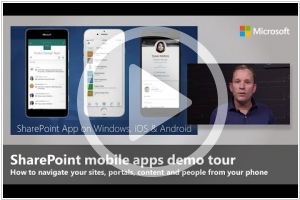Bitrix24 vs SharePoint
June 08, 2023 | Author: Adam Levine
13
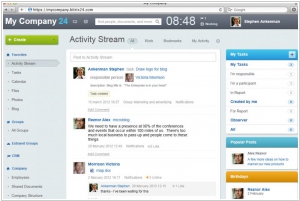
Russian business management service that creates a united work space for your company and enables collaboration to make everyone more effective. Includes activity streams, tasks, file storage (with version control), calendar, photogalleries, instant messager, extranet, CRM, workflow builder, time tracker, profiles, reports, mobile version
59

SharePoint's multi-purpose platform allows for managing and provisioning of intranet portals, extranets and websites, document management and file management, collaboration spaces, social networking tools, enterprise search, business intelligence tooling, process/information integration, and third-party developed solutions. SharePoint can also be used as a web application development platform.
Bitrix24 and SharePoint are both collaboration platforms used by businesses, but they have distinct differences in their features and approaches. Bitrix24 is an all-in-one business collaboration and communication platform that offers a wide range of tools, including project management, document management, CRM, team collaboration, and communication features like chats and video calls. It provides a unified and integrated solution for businesses to manage their projects, workflows, and communication in a centralized platform. SharePoint, on the other hand, is a web-based document management and collaboration platform by Microsoft. It focuses primarily on document storage, version control, and team collaboration. SharePoint integrates tightly with other Microsoft Office products and provides features such as document libraries, team sites, and customizable workflows. SharePoint is often used by organizations already using Microsoft tools and seeking a solution for document management and basic team collaboration.
See also: Top 10 Enterprise Social Software
See also: Top 10 Enterprise Social Software
Bitrix24 vs SharePoint in our news:
2018. SharePoint gets organization-wide news and content targeting
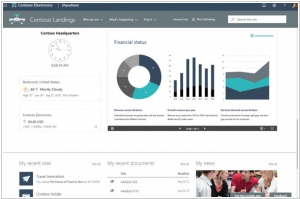
Microsoft has recently announced several enhancements for SharePoint and Office 365 sites, bringing new capabilities and functionalities. Among the notable updates is the introduction of a designated communication site that serves as the official news portal for the organization. This allows news posted on the portal to be easily identified with a special indicator, ensuring clear visibility on both mobile devices and the SharePoint home page. Additionally, a new feature enables the targeting of content to specific audiences based on their Active Directory (AD) Group membership, including dynamic groups. Moreover, SharePoint sites now have the ability to create mega-menus for navigation, facilitating improved user experiences and seamless site exploration. These advancements aim to enhance communication, personalization, and navigation within SharePoint and Office 365 sites.
2017. SharePoint 2016 finally added SharePoint Framework Support
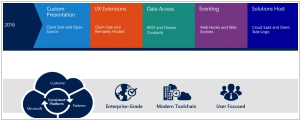
Microsoft's objective in launching SharePoint Framework into general availability in February was to attract a wider pool of developers to the SharePoint ecosystem. Now, with the introduction of SharePoint Feature Pack 2 (FP2), the company extends Framework support to users of SharePoint 2016. Framework serves as a page and web part model, offering comprehensive assistance for client-side SharePoint development, seamless integration with SharePoint data, and compatibility with open source tools. This release simplifies the process for SharePoint 2016 users and third-party developers to construct solutions centered around SharePoint.
2017. SharePoint Framework is generally available

Microsoft has introduced the SharePoint Framework, empowering developers and administrators to construct and deploy components that are utilized by Office 365 users within their production environments. This advancement entails leveraging web technologies to create agile, responsive, and notably mobile-friendly applications on SharePoint. While SharePoint has served as an application and development platform for a considerable duration, the release of the Framework marks a significant stride in enhancing the developer experience. Historically described as unwieldy and challenging, the SharePoint Framework introduces improvements that address these concerns.
2016. Microsoft connects SharePoint Team Sites to Office 365 Groups
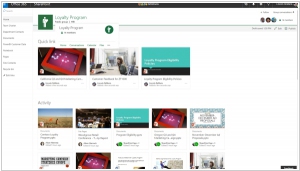
Microsoft is rolling out the integration of SharePoint and Office 365 team sites, introducing a new feature that enables the creation of interconnected SharePoint Online team sites within seconds. This integration simplifies the process as follows: Whenever an Office 365 Group is created, the service automatically generates a SharePoint team site. The appearance of the site can be customized by the team site administrator and includes various elements such as pages, lists, libraries, and team news. SharePoint team sites serve as collaborative spaces where teams can effectively communicate, share documents, and collaborate on projects. They are user-friendly and facilitate the creation of dedicated sites for each project undertaken by the team. Moreover, team sites are easily accessible across multiple devices, making them suitable for mobile workers as well.
2016. Microsoft released SharePoint for Android
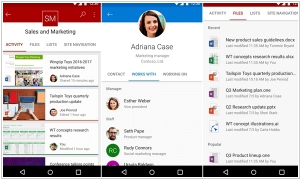
Despite Microsoft's withdrawal from actively competing in the mobile OS market for the past two years, the company has been notably sluggish in releasing Android apps. However, Microsoft has finally unveiled its SharePoint mobile client specifically designed for Android smartphones and tablets. This application offers users the ability to collaborate within team sites and access documents stored in SharePoint across various categories, including Sites, Links, and People. To utilize the SharePoint app, organizations must have an Office 365 subscription that includes SharePoint Online. Support for SharePoint Server 2013 and SharePoint 2016 will be incorporated at a later stage. Earlier this year, Microsoft released SharePoint mobile apps for iOS and Windows Phone, with the latter app still being in the preview stage.
2016. Microsoft brings SharePoint to iOS
Microsoft has introduced a new mobile application for SharePoint users, designed to provide access to a company's SharePoint-powered intranet portal and its content on smartphones and tablets. Initially available on iOS devices such as iPhones and iPads, the app will be extended to Android and Windows platforms by the end of the year, according to Microsoft. The app is compatible with both SharePoint Online in Office 365 and SharePoint Server 2013 or 2016 in on-premises or hybrid environments. It includes a Sites tab that enables users to visit their frequently accessed SharePoint sites, view recent activity, access files, lists, pages, and other content on those sites. Additionally, the app integrates with other Microsoft mobile applications, allowing seamless transitions between apps. For instance, clicking on an Office document in the SharePoint app will open the corresponding Office mobile app, while viewing a document library on a team site will redirect users to the OneDrive mobile app for iOS.
2016. SharePoint adds new document libraries
Now that SharePoint 2016 has arrived, Microsoft is gradually introducing SharePoint Document Libraries to its commercial Office 365 subscribers through SharePoint Online. These new document libraries represent a more user-friendly approach to SharePoint, allowing users to conveniently access documents, modify document metadata, and prioritize content within the document library. This development is significant as it addresses longstanding criticisms of earlier versions of SharePoint regarding usability challenges. Throughout the extensive lead-up to the release of SharePoint 2016, Microsoft pledged its commitment to enhancing the user experience.
2014. Bitrix24 launches inter-company social messenger
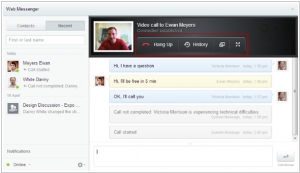
The social collaboration tool Bitrix24 is introducing a new, complimentary instant messenger called Bitrix24.Network. This messenger facilitates seamless communication and collaboration among users from various companies, similar to the concept of "Skype for business." Users can establish free collaboration workspaces with both private and group chats, as well as engage in audio and video calls. Additionally, Bitrix24.Network will soon incorporate features such as file sharing, online document editing, and other tools that are already available in Bitrix24. Furthermore, Bitrix24 has incorporated an internal email server, powered by Yandex Mail, enabling the creation of mailboxes under the domain @bitrix24.com (or any custom domain) for each employee, with the option to add business mail to the portal menu.
2013. Bitrix24 adds VoIP-webphone, live CRM stream, collaborative folders

Bitrix24, the versatile social intranet service, is launching its latest version. This new version introduces the ability to make customer calls directly from the system's web interface using a webRTC-softphone. These calls are recorded and logged in the customer profiles, and you also have the option to store call records. Bitrix24 utilizes Zingaya as its VoIP provider, offering even lower VoIP fees compared to Skype. Previously, Bitrix only allowed internal calls between colleagues within the company and relied on other desktop IP telephony applications like Skype, Lync, or others for external calls. The second new feature is the introduction of a separate activity stream in the CRM section. This stream enables real-time tracking of deals, salesperson activities, and customer interactions. Additionally, Bitrix24 Drive, the app that facilitates file synchronization between local machines and the intranet, has added a new collaboration feature. Previously, it allowed you to store all documents and files in the cloud, edit them offline, and sync changes once you connect to the internet. Now, this functionality extends to shared folders as well, enhancing collaboration within the platform.
2013. IBM kills Lotus. Microsoft kills SharePoint
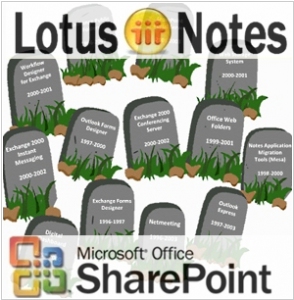
Perhaps the two most famous brands in the history of enterprise software, Lotus and SharePoint, will soon disappear. We mean brands, not specific products. Because by renaming their products, vendors try to erase the association with outdated technologies in customer brain. For example, Lotus appeared back in the 80-s years of last century. In 1995 IBM acquired Lotus Development and began selling their products Lotus Notes/Domino. In the following years most IBM collaboration systems moved under the Lotus umbrella. But last year the revolution occurred. The last child of the Lotus family - SaaS suite LotusLive was renamed to SmartCloud for Social Business. And then the name Lotus was removed from other products. The final nail was the recent launch of Notes/Domino 9.0 Social Edition (without Lotus). ***

